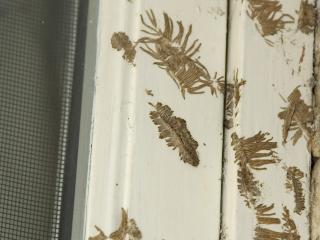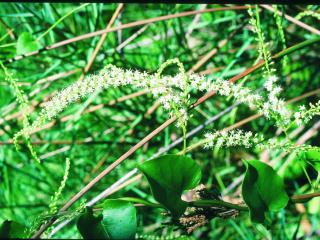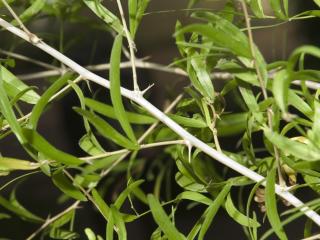Climbers to avoid
Some climbers are rarely or never available commercially because they are notorious garden escapees that invade bushland. However, they still exist in older gardens. Owners of large, unkempt gardens can sometimes be unaware that they have problematic plants and may offer you cuttings or seeds. Turn them down. Generally, the only perceived advantage of these climbers is rapid coverage, but their extreme vigour soon overwhelms most other plants and structures.
These climbers include dolichos pea (Dipogon lignosus), cape ivy (Delairea odorata), climbing groundsel (Senecio angulatus), balloon vine (Cardiospermum cordifolium), cat’s claw (Macfadyena unguis-cati) and moth vine (Araujia sericifera).
Blue or pinkish-mauve flowered morning glory (Ipomoea cairica and I. indica) smothers most other plants and, if planted to cover an aviary, has been known to kill birds when its toxic seeds drop into the enclosure and are eaten.
Various ivies are rampant. The worst – and drabbest – is English ivy (Hedera helix). Even if you remove it from brickwork, the remnants of its aerial roots adhere for years unless you can shift them with a stiff brush. Ivy smothers trees so that they eventually die and fall. It also enters roofs, gutters and drains.
Madeira vine’s swift spread is helped by aerial tubers that drop to the ground and produce fresh plants.
Several ornamentals related to edible asparagus run out of control. Bridal creeper (Asparagus asparagoides) smothers shrubs and trees, while its tuberous mat prevents water reaching them. Sicklethorn (A. falcatus) at first appears to have a lax habit, but recurved hooks allow it to climb for metres. These hooks also make it difficult to pull out without lacerating your hands and arms. Asparagus fern (A. plumosus) has a similar habit and finer but equally sharp prickles.
Confusing behaviour
Occasionally even experienced gardeners get tricked by plants with which they believe they are familiar. Following are two good examples.
Many people know creeping fig (Ficus pumila) as an indoor foliage plant. Trained on a small support and continually trimmed, it is so neat that it can be used for topiary. When allowed to cover walls, however, it acts like ivy (see above). If shoots enter fine cracks, they expand and widen the gaps.
Most ornamental passion flowers (Passiflora species and cultivars) are well behaved; so, too, is the good eating passionfruit (P. edulis) which is usually grafted onto blue passion flower (P. caerulea) rootstock. However, if the passionfruit stem above the graft is damaged, suckers emerge from the rootstock. People mistakenly encourage this new growth, but it will grow rampantly without ever producing delicious fruit.



